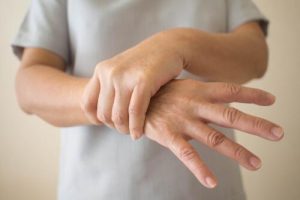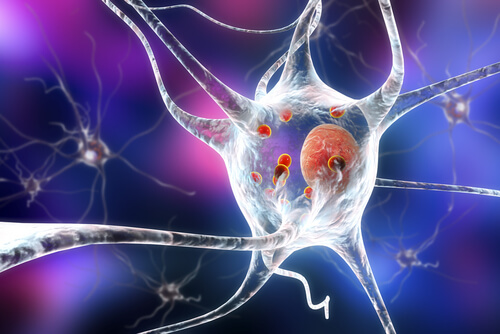7 Signs of Early Onset Parkinson's Disease

Early onset Parkinson’s disease begins before the age of 50. It’s a neurodegenerative disorder that affects the nervous system. It causes damage and the subsequent degeneration of the neurons located in the substantia nigra. The average age of Parkinson’s onset is 60 and the incidence increases significantly with age. However, about 5 to 10 percent of those with Parkinson’s disease have early onset Parkinson’s beginning before the age of 50.
Mutations of specific genes such as the parkin gene may contribute to its onset. People with one or more close relatives with Parkinson’s are at a higher risk of developing the disease.
Overall, the chances of developing the disease are only 2 to 5 percent unless there’s a family history of the disease. It’s estimated that between 15 and 25 percent of people with Parkinson’s know they have a relative with the disease.
In very rare cases, the symptoms of Parkinson’s may appear in people younger than 20. This is known as juvenile parkinsonism. It usually begins with the symptoms of dystonia and bradykinesia. The drug levodopa can often improve these symptoms.
What is Parkinson’s disease?
Doctor James Parkinson made the first diagnosis of the disease in 1817. The British physician observed six patients who displayed typical symptoms of the disease he called “agitating paralysis”. Later, the famous French neurologist, Charcot, gave it the name Parkinson’s disease.
As previously stated, the disease affects the nervous system, producing the degeneration of the neurons of the substantia nigra. These neurons produce dopamine. Dopamine is a fundamental chemical substance that ensures the movements of the body are carried out correctly.

When the brain doesn’t have enough dopamine to properly maintain movement, it incorrectly transmits the signals that tell the body how to move. The typical motor symptoms of the disease appear gradually.
It has also been shown that Parkinson’s also affects other neurons. Therefore, other neurotransmitters such as serotonin, noradrenaline, and acetylcholine suffer as well. This would explain the other non-motor symptoms of the disease.
Early onset Parkinson’s
When we think about someone with Parkinson’s, we mainly visualize a person with hand tremors. They walk very slowly with their backs slightly bent. Their bodies are a bit rigid. It’s true that this image isn’t that far from reality.
However, the tremors, rigidity and slow walking pace aren’t the only symptoms of Parkinson’s disease. In addition to those and other motor symptoms, a wide range of non-motor symptoms also exist.
These non-motor symptoms are cognitive, behavioral, and emotional changes. They can hinder the patients’ day to day lives.
However, it’s not uncommon for motor and non-motor symptoms typical of Parkinson’s to manifest in very young people. Although the disease is more common in older people, it’s not limited to them exclusively.
In the case of juvenile Parkinson’s, non-motor symptoms may be the least typical, but are more common in those under 20. Because these Parkinson’s symptoms aren’t exclusive to the disease, other ailments with the same symptoms make the diagnosis complicated at times.

Seven signs of early onset Parkinson’s
There are a series of symptoms that can alert us to the early onset of Parkinson’s disease. There are more signs, but we’re going to focus on these seven:
- Sleep disorders. The most common disorders are insomnia (difficulty sleeping), restless legs syndrome, and REM sleep behavior disorder.
- Depression. This is one of the first symptoms to appear and is in fact considered an early indicator of the disease.
- Other mood changes. In addition to depressive symptoms, anxiety and apathy are very common. These symptoms can negatively influence the desire to seek help and resolution.
- Cognitive changes. Many people with early onset Parkinson’s usually find it difficult to do more than one thing at once. Poor task execution, slower thinking speed, attention and concentration problems, memory problems, and dementia are all symptoms of early onset Parkinson’s.
- Tremors. Although they usually start in the hands, they start in the jaw or on the feet in other patients. The most characteristic thing about these tremors is that they occur at rest.
- Bradykinesia. This is a gradual loss of spontaneous movement. General movement simply slows down. This is one of the most disabling and frustrating symptoms for those affected.
- Fatigue. With early onset Parkinson’s, the patient feels tired all the time without having exerted themselves at all.
As we’ve seen, Parkinson’s isn’t a disease that occurs exclusively in “older people”. Early onset Parkinson’s disease can very debilitating. These seven signs may help you recognize the disease and visit a specialist who can diagnose you as soon as possible.
Early onset Parkinson’s disease begins before the age of 50. It’s a neurodegenerative disorder that affects the nervous system. It causes damage and the subsequent degeneration of the neurons located in the substantia nigra. The average age of Parkinson’s onset is 60 and the incidence increases significantly with age. However, about 5 to 10 percent of those with Parkinson’s disease have early onset Parkinson’s beginning before the age of 50.
Mutations of specific genes such as the parkin gene may contribute to its onset. People with one or more close relatives with Parkinson’s are at a higher risk of developing the disease.
Overall, the chances of developing the disease are only 2 to 5 percent unless there’s a family history of the disease. It’s estimated that between 15 and 25 percent of people with Parkinson’s know they have a relative with the disease.
In very rare cases, the symptoms of Parkinson’s may appear in people younger than 20. This is known as juvenile parkinsonism. It usually begins with the symptoms of dystonia and bradykinesia. The drug levodopa can often improve these symptoms.
What is Parkinson’s disease?
Doctor James Parkinson made the first diagnosis of the disease in 1817. The British physician observed six patients who displayed typical symptoms of the disease he called “agitating paralysis”. Later, the famous French neurologist, Charcot, gave it the name Parkinson’s disease.
As previously stated, the disease affects the nervous system, producing the degeneration of the neurons of the substantia nigra. These neurons produce dopamine. Dopamine is a fundamental chemical substance that ensures the movements of the body are carried out correctly.

When the brain doesn’t have enough dopamine to properly maintain movement, it incorrectly transmits the signals that tell the body how to move. The typical motor symptoms of the disease appear gradually.
It has also been shown that Parkinson’s also affects other neurons. Therefore, other neurotransmitters such as serotonin, noradrenaline, and acetylcholine suffer as well. This would explain the other non-motor symptoms of the disease.
Early onset Parkinson’s
When we think about someone with Parkinson’s, we mainly visualize a person with hand tremors. They walk very slowly with their backs slightly bent. Their bodies are a bit rigid. It’s true that this image isn’t that far from reality.
However, the tremors, rigidity and slow walking pace aren’t the only symptoms of Parkinson’s disease. In addition to those and other motor symptoms, a wide range of non-motor symptoms also exist.
These non-motor symptoms are cognitive, behavioral, and emotional changes. They can hinder the patients’ day to day lives.
However, it’s not uncommon for motor and non-motor symptoms typical of Parkinson’s to manifest in very young people. Although the disease is more common in older people, it’s not limited to them exclusively.
In the case of juvenile Parkinson’s, non-motor symptoms may be the least typical, but are more common in those under 20. Because these Parkinson’s symptoms aren’t exclusive to the disease, other ailments with the same symptoms make the diagnosis complicated at times.

Seven signs of early onset Parkinson’s
There are a series of symptoms that can alert us to the early onset of Parkinson’s disease. There are more signs, but we’re going to focus on these seven:
- Sleep disorders. The most common disorders are insomnia (difficulty sleeping), restless legs syndrome, and REM sleep behavior disorder.
- Depression. This is one of the first symptoms to appear and is in fact considered an early indicator of the disease.
- Other mood changes. In addition to depressive symptoms, anxiety and apathy are very common. These symptoms can negatively influence the desire to seek help and resolution.
- Cognitive changes. Many people with early onset Parkinson’s usually find it difficult to do more than one thing at once. Poor task execution, slower thinking speed, attention and concentration problems, memory problems, and dementia are all symptoms of early onset Parkinson’s.
- Tremors. Although they usually start in the hands, they start in the jaw or on the feet in other patients. The most characteristic thing about these tremors is that they occur at rest.
- Bradykinesia. This is a gradual loss of spontaneous movement. General movement simply slows down. This is one of the most disabling and frustrating symptoms for those affected.
- Fatigue. With early onset Parkinson’s, the patient feels tired all the time without having exerted themselves at all.
As we’ve seen, Parkinson’s isn’t a disease that occurs exclusively in “older people”. Early onset Parkinson’s disease can very debilitating. These seven signs may help you recognize the disease and visit a specialist who can diagnose you as soon as possible.
This text is provided for informational purposes only and does not replace consultation with a professional. If in doubt, consult your specialist.







